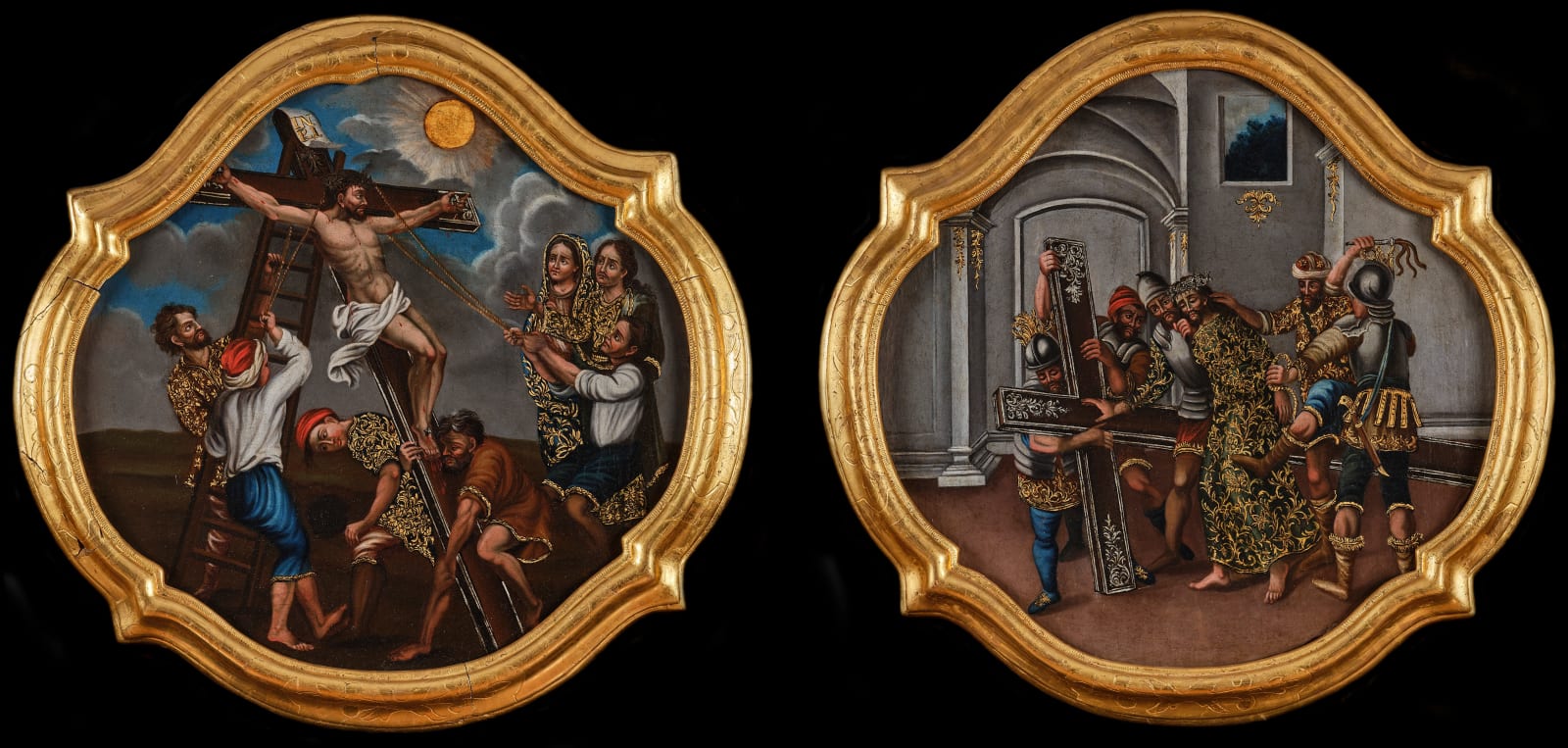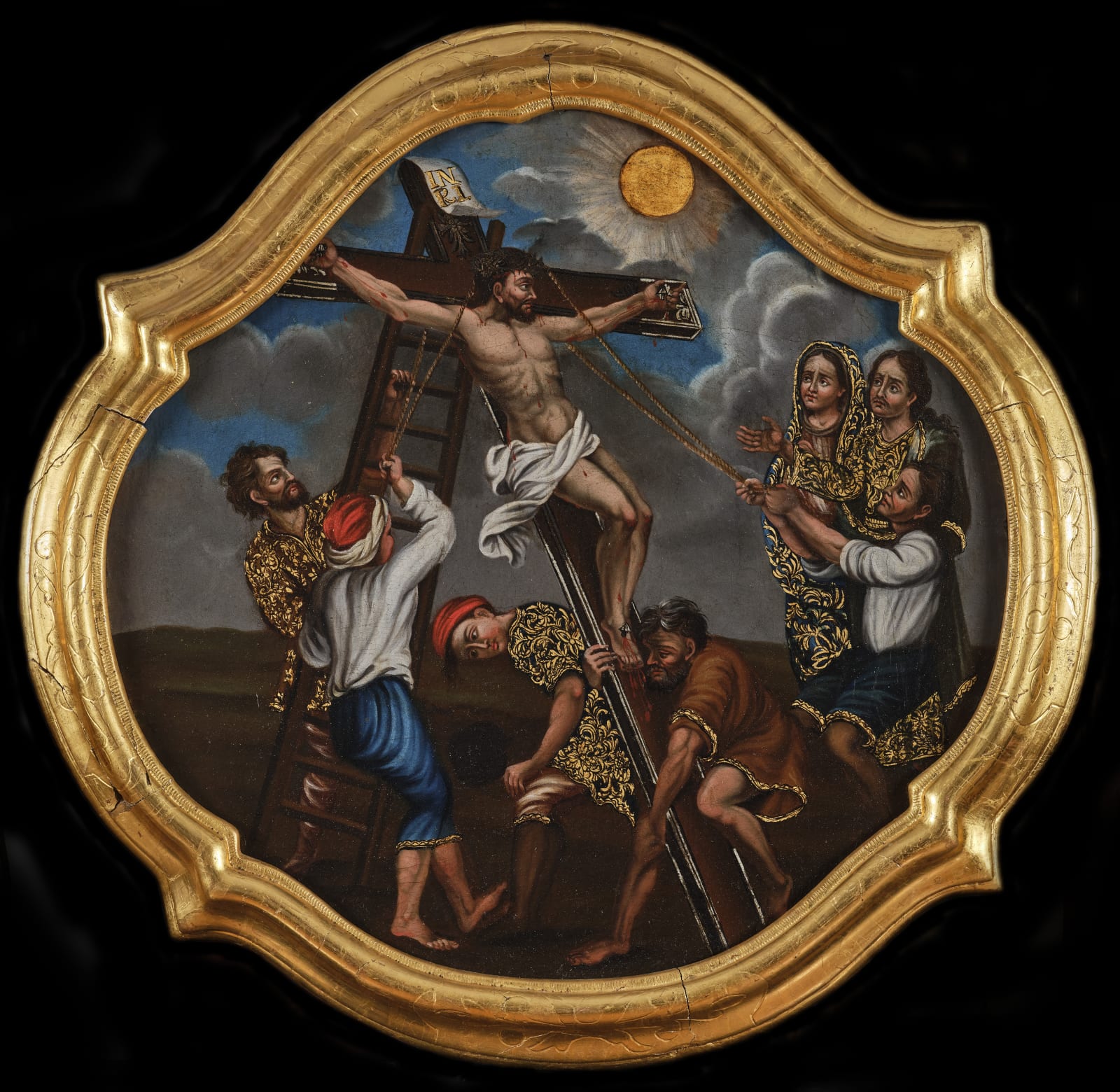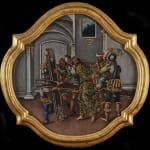Jesus Nailed to the Cross & Simon of Cyrene Helping Jesus
Guatemala, 18th century
Oil on canvas
Further images
Provenance
Private collection, Spain
The term Via Curcis refers to the series of 14 stations providing the faithful with a sequential narrative depicting the stages on Christ’s Way of the Cross, from his condemnation by Pilate to his arrival in Calvary where his crucifixion, death and burial took place. Although the iconographic and devotional foundations of this Passion story date from the 15th century, becoming particularly popular in the years following the Counter-Reformation, it was not until the 18th century, thanks to the work of the Franciscan Leonard of Port Maurice (1676–1751), that the official model we see here became established, probably arriving in Guatemala through one of the many prints that crossed the Atlantic from Europe to the New World, where the practice of the Stations became completely integrated.
Read Essay





